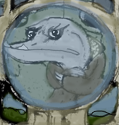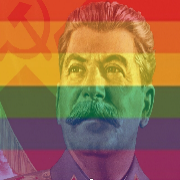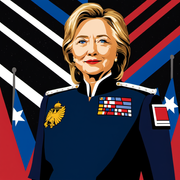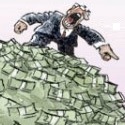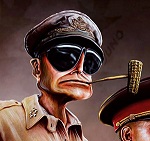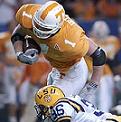|
Outside Dawg posted:The map posted is from 1863, 2 years after the battle, at the time of the first Bull Run, most of the fortifications did not exist, and it's very likely given the state of the Union army's morale, mounting any kind of defense would have been problematic at best. I was referring mainly to Jubal Early's actual attempt on DC, but I agree with Panzeh about the problem of general disorder. Other than the Mexican-American War there hadn't been a major war since the War of 1812, and the troops on both sides were quite green. Changing gears for a minute I found the picture of crossbowmen firing at a high angle I'd been looking for:  It's a 16th century woodcut
|
|
|
|

|
| # ? May 16, 2024 16:05 |
|
Rodrigo Diaz posted:Changing gears for a minute I found the picture of crossbowmen firing at a high angle I'd been looking for: The range here appears to be about two meters. Are we sure those bolts aren't lawn darts? Is charging the enemy with your lances pointed at the heavens a standard cavalry tactic for this era?
|
|
|
|
I think the range is a product of the size of the work, rather than a literal depiction. "Wait until you see the whites of their eyes" is generally a bad idea. Nothing about the cavalry's posture says "charging" to me at all. I think we're looking at crossbowmen shooting while the cavalry is forming up and the proximity is just because the guy isn't carving the side of a barn.
|
|
|
|
Nenonen posted:Is charging the enemy with your lances pointed at the heavens a standard cavalry tactic for this era? Godholio posted:I think the range is a product of the size of the work, rather than a literal depiction. "Wait until you see the whites of their eyes" is generally a bad idea. HEY GUNS fucked around with this message at 01:00 on Dec 10, 2013 |
|
|
|
a travelling HEGEL posted:Not to mention, of course, that large figures are large because they're important, not because they actually were large or are supposed to be closer to the viewer/each other. Koramei might be able to correct me or refine this statement, but this kind of art is primarily about conveying information and secondarily about displaying something realistically. Basically they're what the 'moving pictures' were before the moving bit happened.
|
|
|
|
Alchenar posted:Basically they're what the 'moving pictures' were before the moving bit happened. They move if you know how to read them right.
|
|
|
|
Many, many pages ago, probably in the last thread, there was a long discussion about the intertwining dynamics of social class and rank in European armies before and during WWI, and how the war itself radically changed those dynamics. I remember talk that early attempts at having small independent squad based tactics being a reflection of the shift from the central power that the nobility/high ranking officers previously had. Can anyone elaborate on this, or recommend a book worth reading that addresses it?
|
|
|
|
I've been looking at some illustrations of the Franco-Prussian and was wondering when European armies decided to abandon close order infantry formations. It must not have happened until well after the wide scale introduction of smokeless powder, correct? edit: Ignoring specialty troops like skirmishers. Cumshot in the Dark fucked around with this message at 08:38 on Dec 10, 2013 |
|
|
|
Cumshot in the Dark posted:I've been looking at some illustrations of the Franco-Prussian and was wondering when European armies decided to abandon close order infantry formations. It must not have happened until well after the wide scale introduction of smokeless powder, correct? It, uh... didn't end until WWI 
|
|
|
|
Wait, that's WWI? The hats scream ACW to me.
|
|
|
|
Grand Prize Winner posted:Wait, that's WWI? The hats scream ACW to me. Also  Scots reforming before another charge during WW1
|
|
|
Grand Prize Winner posted:Wait, that's WWI? The hats scream ACW to me. The Kepi is a general French Victorian era hat that went constantly in and out of style in most Western armies up and until after WW1. Military fashion sometimes like to copy the superior power of the time, the Kepi sort of fell our favor after the Franco Prussian War war but remained in some form at least with France and French Colonial Military and Civil service for quite a bit into the 20th century. Hilariously, after the Franco Prussian War quite a few European armies dropped the Kepi and adopted some suspiciously Prussian looking helmets. And I kind of like it compared to the squat oddly angled early Victorian shako. Shame that Photograph is in black and white because it'd even be more jarring seeing that the soldiers are wearing blue a mostly blue uniform with red pants. EDIT: Also, with the Scottish I believed they adopted a khaki or khaki cover for their kilts? SeanBeansShako fucked around with this message at 09:28 on Dec 10, 2013 |
|
|
|
|
When did the Scots regiments drop their kilts anyway? WWII movies tend to feature the kilts, but were they actual battlefield attire then? If so, when? I seem to remember some Scots regiments (black watch?) getting shipped over to Iraq after OIF. Did they wear kilts then? edit: what about undies?
|
|
|
|
Grand Prize Winner posted:When did the Scots regiments drop their kilts anyway? WWII movies tend to feature the kilts, but were they actual battlefield attire then? If so, when? I seem to remember some Scots regiments (black watch?) getting shipped over to Iraq after OIF. Did they wear kilts then? I've read that kilts are literally the worst thing you could wear while living in a trench.
|
|
|
Rabhadh posted:I've read that kilts are literally the worst thing you could wear while living in a trench. Considering the rats alone ugh.
|
|
|
|
|
Grand Prize Winner posted:When did the Scots regiments drop their kilts anyway? WWII movies tend to feature the kilts, but were they actual battlefield attire then? If so, when? I seem to remember some Scots regiments (black watch?) getting shipped over to Iraq after OIF. Did they wear kilts then? It used to be that only the Highland regiments (e.g. the Black Watch) wore kilts. Lowland regiments (e.g. the King's Own Scottish Borderers or the Cameronians) traditionally wore trews, sort of tartan-patterned pant.  "Tactikilts" are a thing but they look dumb as gently caress and no one should ever wear one. Thank god they're not standard issue... 
Bacarruda fucked around with this message at 10:30 on Dec 10, 2013 |
|
|
|
That is retarded. Why would you want to try to disguise your kilt?
|
|
|
|
|
Speaking about Kepis, I recall WWI french soldiers complaining about about the fact that they just had small steel skullcaps underneath. Which brings me to something that I forgot to take a picture of at the Heeresgeschichtliches Museum, there's a large felt hat of an 30YW arquebusier on display, right next to it there's a steel skullcap that is worn underneath. Was that standard equipment?
|
|
|
|
On French WW1 uniforms; French uniforms in 1914 were extremely similar to those that they had during the Franco-Prussian war, the differences are minor, and are related towards the adoption of more modern equipment. Cosmetically, they're almost identical. Franco-Prussian war, 1870, Napoleon III imperial guard:  1914 infantry:  1914 Tirallieur uniform (practically identical to the 1870 uniform again):  1911 cavalry in parade dress:  1914 cavalry in field uniform:  Propaganda poster, but you can tell that the uniform quickly adopted in the winter of 1914-1915 was of a logical and much less ridiculous tone, also wearing the 1915 Adrian pattern helmet:  Bonus pic I had for some reason: 
|
|
|
|
Godholio posted:Nothing about the cavalry's posture says "charging" to me at all. I think we're looking at crossbowmen shooting while the cavalry is forming up and the proximity is just because the guy isn't carving the side of a barn. Assuming that as with later 19th century cavalry a charge isn't "straight to top speed while shouting". Could it be that they are in the earlier stages when the horses are picking up speed and maintaining a general formation, not yet having reached the gallop phase? There wouldn't be a point in lowering the lances. Lovely Joe Stalin fucked around with this message at 11:35 on Dec 10, 2013 |
|
|
|
How did the Germans in WWII manage to run their war economy for so long? My WWI books talk of the starvation in Germany imposed by the British naval blockade, but then also that they couldn't really build effective trucks and armored cars by 1917 because they were all out of rubber - forcing them to construct vehicles with road-destroying steel wheels. Oil would come from Romania and agricultural products and other raw materials I expect were extracted from France and Poland and the other occupied territories, and I do know there was starvation going on in Germany and its occupied territories by 1944 onwards (just not as harped on for some reason), but it's not like there's a lot of rubber to be had even if you controlled continental Europe, but the Germans just kept producing trucks and tanks and planes right up to the end.
|
|
|
|
gradenko_2000 posted:How did the Germans in WWII manage to run their war economy for so long? My WWI books talk of the starvation in Germany imposed by the British naval blockade, but then also that they couldn't really build effective trucks and armored cars by 1917 because they were all out of rubber - forcing them to construct vehicles with road-destroying steel wheels. Synthetic rubber was developed at some point during the 1930ies (it was actually developed in the 1890ies, but only really took off during WWII). Plus until 1941 they could just import it via the USSR.
|
|
|
|
Small quantities of material were traded between Germany and Japan (rubber specifically was available in Japan post-1941, I believe tungsten as well), but the magic of organic chemistry was Germany's main weapon. The Auschwitz III / Monowitz concentration camp is a notorious complex in which synthetic polymers were mass produced. It's worth noting, though, that Germany wasn't the only country suffering from rubber supply deficiencies. The US relied on rubber from South-East Asia, and when this region became hostile, Americans had to utilize synthetic materials as well. In short, if you have the right hydrocarbons, you can basically play an alchemist
|
|
|
|
gradenko_2000 posted:How did the Germans in WWII manage to run their war economy for so long? My WWI books talk of the starvation in Germany imposed by the British naval blockade, but then also that they couldn't really build effective trucks and armored cars by 1917 because they were all out of rubber - forcing them to construct vehicles with road-destroying steel wheels. For things such as rubber the advance of synthetic materials allowed erzates replacements of rubber(plus trade with Japan which had the majority of rubber plantations under its control) such as those based from Oil, while fuel was though coal gasification. Since Germany economics were basically plain theft from 1936 onwards their was enough liquidity in the financial system to keep the show on the road in regards to payments, ect. even though the actual economics itself was dire with huge deficits and balance of payments. Their was lots of trade pre 41 with Russia anyway which gave them a reasonable buffer of food and other produce from Russia. Germany wasn't really blockaded in the same way as the First World War due to the size of the German holdings which meant for most of the war there was trade with neutral parties. http://en.wikipedia.org/wiki/Economy_of_Nazi_Germany seems pretty well researched although dose lack detail on the war years
|
|
|
|
We spoke about the foodstuffs and all that a while ago, and also in the Nazi-Germany thread. http://en.wikipedia.org/wiki/Hunger_Plan Bonus points if you can read the german version of the article, it's quite good. The nazi leadership attributed the lost war of 1918 to a crumbling of the homefront, brought about by The deal with the soviets helped the economy for some time, but by the time the invasion of the UK failed, it was clear to everyone in the planning that by 1942 they'd start to make cuts.
|
|
|
|
Read this book if you're into that sort of thing; it goes into great detail about everything the Nazis did wrong from an economic standpoint.
|
|
|
|
Grand Prize Winner posted:Wait, that's WWI? The hats scream ACW to me. 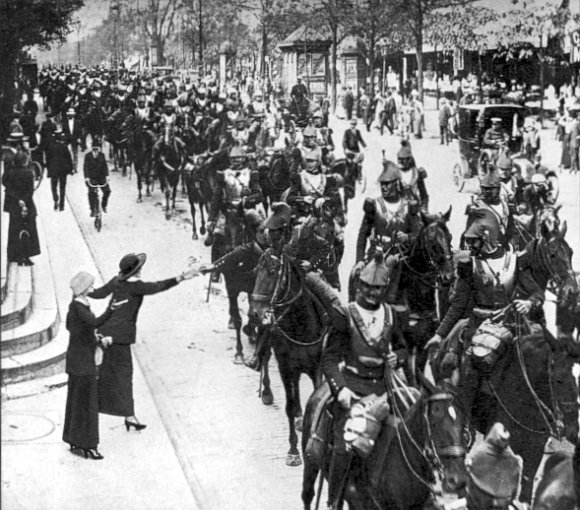
|
|
|
|
Arquinsiel posted:This is one of my favourite pictures from WWI: As it was promised in legend, the ghost of Napolean and his men rose up to defend France in her hour of need.
|
|
|
|
Ghost of Mussolini posted:1914 infantry: Ah les les pantaloons rouge, the pants that got hundreds of frenchmen killed. You'd think someone would have learned about the color red on the battlefield from the American revolution but not France
|
|
|
|
Raskolnikov38 posted:You'd think someone would have learned about the color red on the battlefield from the American revolution... In the 1770s, it is of vital importance that you can see the rest of your army through the smoke. You won't be able to see them anyway, but the red helps. The idea that the American Revolutionaries invented skirmishing and that it won them the war is a myth on both counts--the first because dispersed formations have been a thing since at least the 1740s (earlier, really) and the second because skirmishers don't decide battles, line infantry does. The Americans wished they could drill like the British did. HEY GUNS fucked around with this message at 18:35 on Dec 10, 2013 |
|
|
cafel posted:As it was promised in legend, the ghost of Napolean and his men rose up to defend France in her hour of need. The first Napoleon of course, poor old Napoleon III was pretty much coming to the end of well everything when the Franco Prussian War hit. Napoleonic and Victorian style uniforms still exist today in ceremonial form for some European nations. Insert picture of the Papal Guard/Coldstream Guard here.
|
|
|
|
|
Yeah I don't understand that statement at all. The Brits were vastly superior in conventional combat to anything the Americans could put together. American victories over British regulars were about as far from common as it gets. On the contrary, it scared the hell out of a lot of rebel troops.
|
|
|
|
a travelling HEGEL posted:
Oh yeah I'm not saying the British lost because they wore red. Just that between 1776 and 1914 the idea that red is probably not the best color to wear on the battlefield should have trickled up to french high command but welp.
|
|
|
Raskolnikov38 posted:Oh yeah I'm not saying the British lost because they wore red. Just that between 1776 and 1914 the idea that red is probably not the best color to wear on the battlefield should have trickled up to french high command but welp. Well, not the best colour to wear on the battlefield after 1870 anyways. Though it kind of amuses me looking at European Victorian era uniform fashions and seeing most nations going towards darker blue, or drab grey or brown and my country refusing to change anything with the bulk of the British Army until around 1880.
|
|
|
|
|
Raskolnikov38 posted:Ah les les pantaloons rouge, the pants that got hundreds of frenchmen killed. I think its mentioned in The Price of Glory that the way French infantry kept their shiny mess tins on the outside of their kit bags got a lot more of them killed than red pants ever did.
|
|
|
|
Brits were still in red coats up till 1880? Crazy.
|
|
|
Grand Prize Winner posted:Brits were still in red coats up till 1880? Crazy. Things were changing of course, slowly but surely. Khaki started coming in around the 1880's and by the 1890's was being used during the Colonial Conflicts in South Africa and the Sudan. I think Indian and Sikh Sepoy's starting using it much earlier. I'm not sure the exact date the 'modern' WW1 khaki era uniforms were introduced to the British soldiers stationed in the UK. SeanBeansShako fucked around with this message at 19:34 on Dec 10, 2013 |
|
|
|
|
Slavvy posted:Why would you want to try to disguise your kilt? Embarrassment.
|
|
|
|
Raskolnikov38 posted:Just that between 1776 and 1914 the idea that red is probably not the best color to wear on the battlefield should have trickled up to french high command but welp. The best color to paint aircraft if you want to make them hard to see is a pale shade of pink, pretty much the color pink the RAF uses in its low-visibility roundels. It's lower visibility under all conditions than black. Grey is also better than black, but pink is even better. There are exceptions, like really high-altitude aircraft that if you're going to see them at all, you'll see them against a black background (so things like the U-2 and SR-71 are black) Or if you're building your aircraft with the expectation that they'll participate in a full-blown nukefest (in which case white paint is nice because it reflects thermal radiation better). But generally if you're going to fly your airplane in a variety of conditions (day, night, over the ocean, over the desert, over the woods, over the hills and far away), pink is what you want to paint it if your priority is not being seen. So the 160th SOAR, the Army's special-ops helicopter regiment, paints their airplanes absolutely black, even though that's an easier color to see at night than grey is. I conclude that the "it looks cool" factor is relevant even at the highest levels of military accomplishment today.
|
|
|
|

|
| # ? May 16, 2024 16:05 |
|
Hey guys, I'm sorry if someone already asked this (but I expect not). It's nearly Christmas and people were asking for gift ideas for me and I'd really love if someone had a good, English-language book that talks in depth about Louis, Le Grand Conde. I'm hoping Hegel might have a recommendation...
|
|
|















